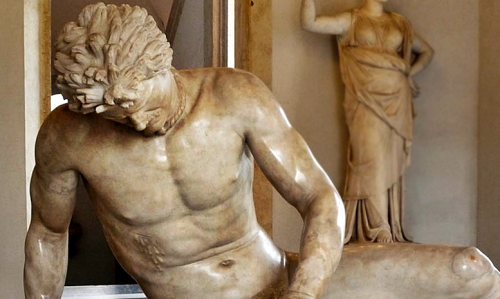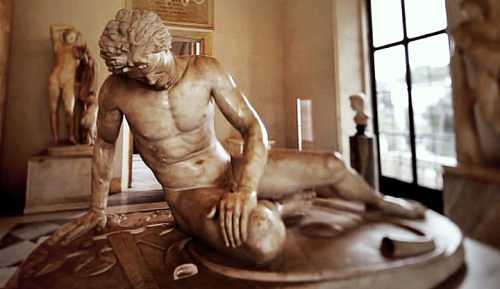richard-miles-archaeologist:Ancient Worlds - BBC Two Episode 4 “Return of the King”The Hellenistic p
richard-miles-archaeologist:Ancient Worlds - BBC Two Episode 4 “Return of the King”The Hellenistic period (started in 323 BC with the death of Alexander the Great) saw some of the best known sculptures from the ancient world, including the Venus de Milo and the Winged Victory of Samothrace.The Dying Gaul (or The Dying Galatian) is a 2nd century AD Roman marble copy of a lost 3rd century BC Hellenistic bronze sculpture. The original statue may have been commissioned by Attalus I of Pergamon to celebrate his victory over the Galatians (migrating Celtic tribes from Gaul who had crossed the Hellespont and settled in Galatia, present day Turkey). The identity of the sculptor is unknown, but the sculpture has been associated with Epigonus, whose name is inscribed on the base of one of the great victory monuments erected on the acropolis at Pergamon around 220 BC.The -Roman copy- Dying Gaul was found in Rome in the early 17th century, in the gardens of the Villa Ludovisi with another marble sculpture copy of a Greek bronze original: the Gaul Committing Suicide with his Wife. The sculptures were not immediately recognized as depictions of Gallic warriors; the earliest record of the Dying Gaul describes it as a gladiator. The work was most commonly known as The Dying Gladiator until the 20th century, on the assumption that it depicted a wounded gladiator in a Roman amphitheatre.The sculpture portrays a Gallic warrior in his final moments, as he falls from a fatal wound to his lower right chest. He lies naked, on his fallen shield while his sword, belt, and a curved trumpet lie beside him. Capitoline Museum, Rome, Italy -- source link
Tumblr Blog : richard-miles-archaeologist.tumblr.com


